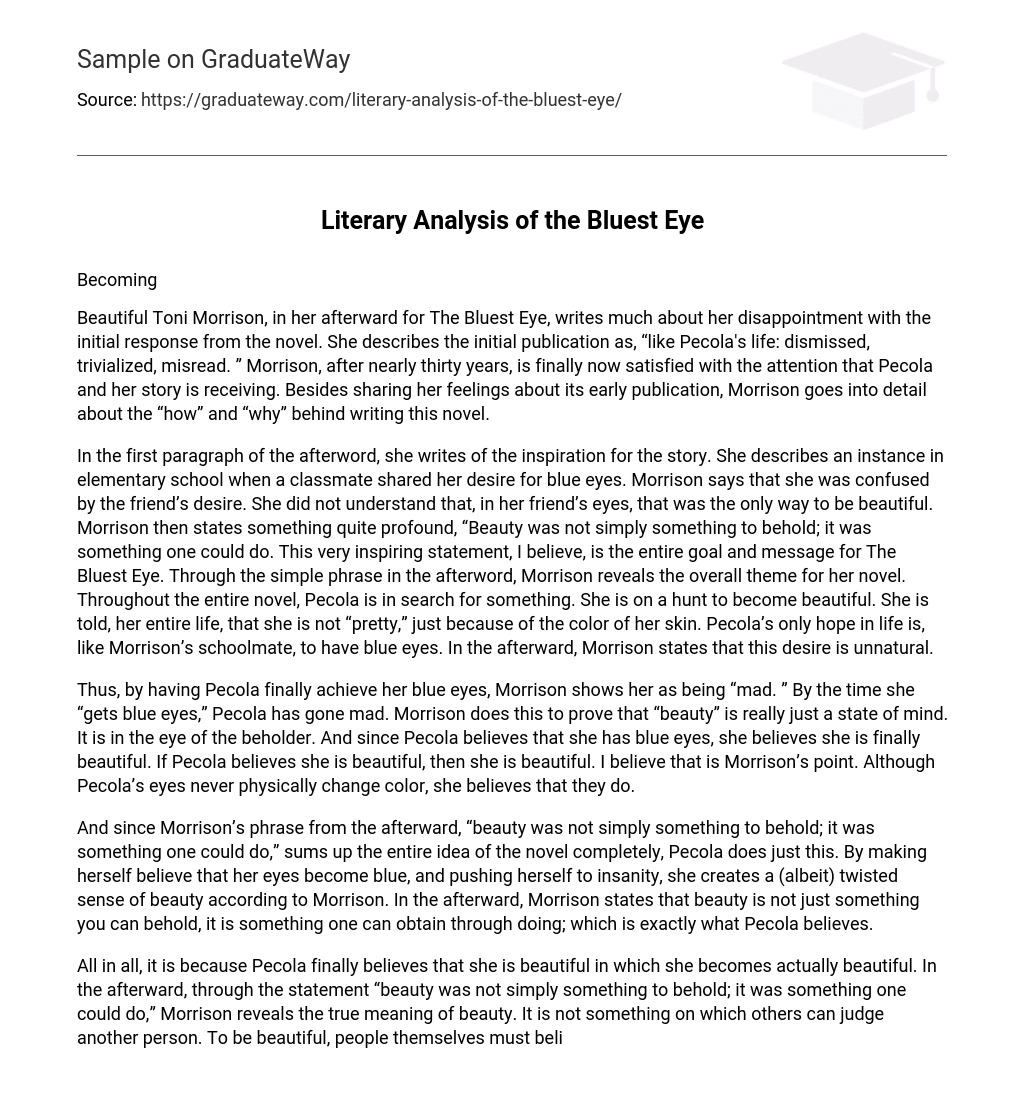Becoming
Beautiful Toni Morrison, in her afterward for The Bluest Eye, writes much about her disappointment with the initial response from the novel. She describes the initial publication as, “like Pecola’s life: dismissed, trivialized, misread. ” Morrison, after nearly thirty years, is finally now satisfied with the attention that Pecola and her story is receiving. Besides sharing her feelings about its early publication, Morrison goes into detail about the “how” and “why” behind writing this novel.
In the first paragraph of the afterword, she writes of the inspiration for the story. She describes an instance in elementary school when a classmate shared her desire for blue eyes. Morrison says that she was confused by the friend’s desire. She did not understand that, in her friend’s eyes, that was the only way to be beautiful. Morrison then states something quite profound, “Beauty was not simply something to behold; it was something one could do. This very inspiring statement, I believe, is the entire goal and message for The Bluest Eye. Through the simple phrase in the afterword, Morrison reveals the overall theme for her novel. Throughout the entire novel, Pecola is in search for something. She is on a hunt to become beautiful. She is told, her entire life, that she is not “pretty,” just because of the color of her skin. Pecola’s only hope in life is, like Morrison’s schoolmate, to have blue eyes. In the afterward, Morrison states that this desire is unnatural.
Thus, by having Pecola finally achieve her blue eyes, Morrison shows her as being “mad. ” By the time she “gets blue eyes,” Pecola has gone mad. Morrison does this to prove that “beauty” is really just a state of mind. It is in the eye of the beholder. And since Pecola believes that she has blue eyes, she believes she is finally beautiful. If Pecola believes she is beautiful, then she is beautiful. I believe that is Morrison’s point. Although Pecola’s eyes never physically change color, she believes that they do.
And since Morrison’s phrase from the afterward, “beauty was not simply something to behold; it was something one could do,” sums up the entire idea of the novel completely, Pecola does just this. By making herself believe that her eyes become blue, and pushing herself to insanity, she creates a (albeit) twisted sense of beauty according to Morrison. In the afterward, Morrison states that beauty is not just something you can behold, it is something one can obtain through doing; which is exactly what Pecola believes.
All in all, it is because Pecola finally believes that she is beautiful in which she becomes actually beautiful. In the afterward, through the statement “beauty was not simply something to behold; it was something one could do,” Morrison reveals the true meaning of beauty. It is not something on which others can judge another person. To be beautiful, people themselves must believe it is true. For Pecola, being beautiful meant having blue eyes. It is only when she finally convinces herself that she has blue eyes that she believes she is truly beautiful.





